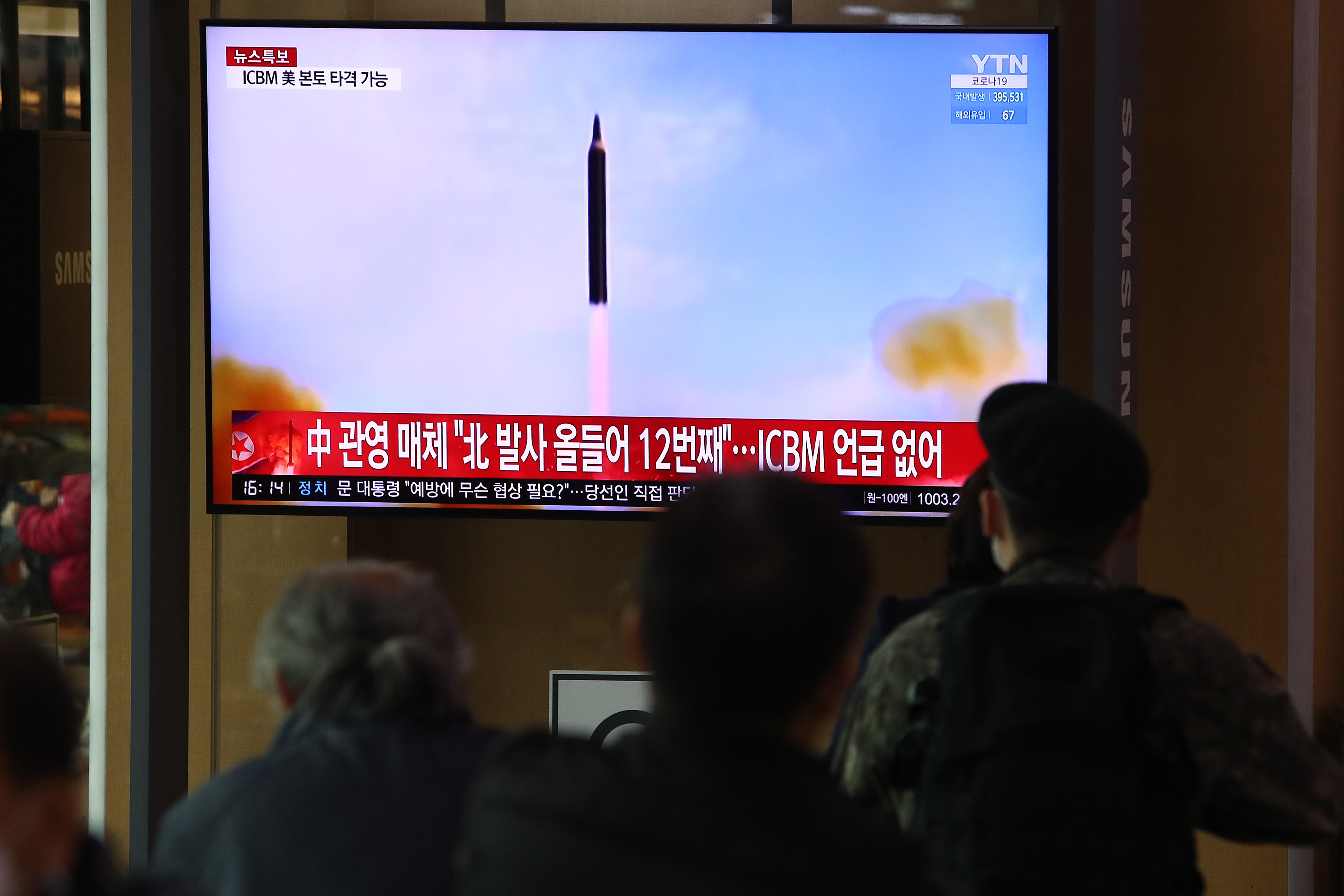North Korea launches most powerful missile yet in 1st ICBM test since 2017: reports

North Korea launched an intercontinental ballistic missile (ICBM) on Thursday (March 24), its first test of a long-range weapon-delivery system since 2017, according to media reports.
The ICBM flew for about 71 minutes, reaching a maximum altitude of around 3,700 miles (6,000 kilometers) and traveling 680 miles (1,100 km) from its launch site before splashing down in Japanese waters, Japanese authorities determined, according to Reuters.
Those numbers all top North Korea's most recent ICBM launch, a 2017 test that sent a Hwasong-15 missile on a 54-minute flight that covered about 620 miles (1,000 km) and hit an altitude of 2,800 miles (4,500 km).
Related: North Korea's rocket and missile program (photos)
It's unclear what missile flew on Thursday. South Korean experts are investigating the possibility that the test involved an upgraded Hwasong-15, Reuters reported, citing South Korea's Yonhap news agency. But it's also possible that the flight featured North Korea's more powerful Hwasong-17 vehicle. (Details of North Korea's weapons systems are hard to come by, given how secretive the autocratic regime tends to be.)
The United Nations has imposed a variety of weapons-related sanctions on North Korea over the years, seeking to limit the damage that the nuclear-armed nation can deal out to its neighbors and the wider world. Thursday's ICBM test was a clear violation of those sanctions, U.S. officials said. (The launch also breached a moratorium on ICBM and nuclear-weapons testing that North Korean leader Kim Jong-un announced in 2018, as Reuters noted.)
"The door has not closed on diplomacy, but Pyongyang must immediately cease its destabilizing actions," White House Press Secretary Jen Psaki said in a statement Thursday, referencing the capital of North Korea. "The United States will take all necessary measures to ensure the security of the American homeland and Republic of Korea and Japanese allies."
Breaking space news, the latest updates on rocket launches, skywatching events and more!
Thursday's ICBM launch continued a busy stretch of testing for North Korea. The nation has now conducted at least 11 missile tests in 2022, according to Reuters. The other flights involved shorter-range vehicles, at least two of which were apparently topped with a hypersonic glider.
Mike Wall is the author of "Out There" (Grand Central Publishing, 2018; illustrated by Karl Tate), a book about the search for alien life. Follow him on Twitter @michaeldwall. Follow us on Twitter @Spacedotcom or on Facebook.

Michael Wall is a Senior Space Writer with Space.com and joined the team in 2010. He primarily covers exoplanets, spaceflight and military space, but has been known to dabble in the space art beat. His book about the search for alien life, "Out There," was published on Nov. 13, 2018. Before becoming a science writer, Michael worked as a herpetologist and wildlife biologist. He has a Ph.D. in evolutionary biology from the University of Sydney, Australia, a bachelor's degree from the University of Arizona, and a graduate certificate in science writing from the University of California, Santa Cruz. To find out what his latest project is, you can follow Michael on Twitter.
